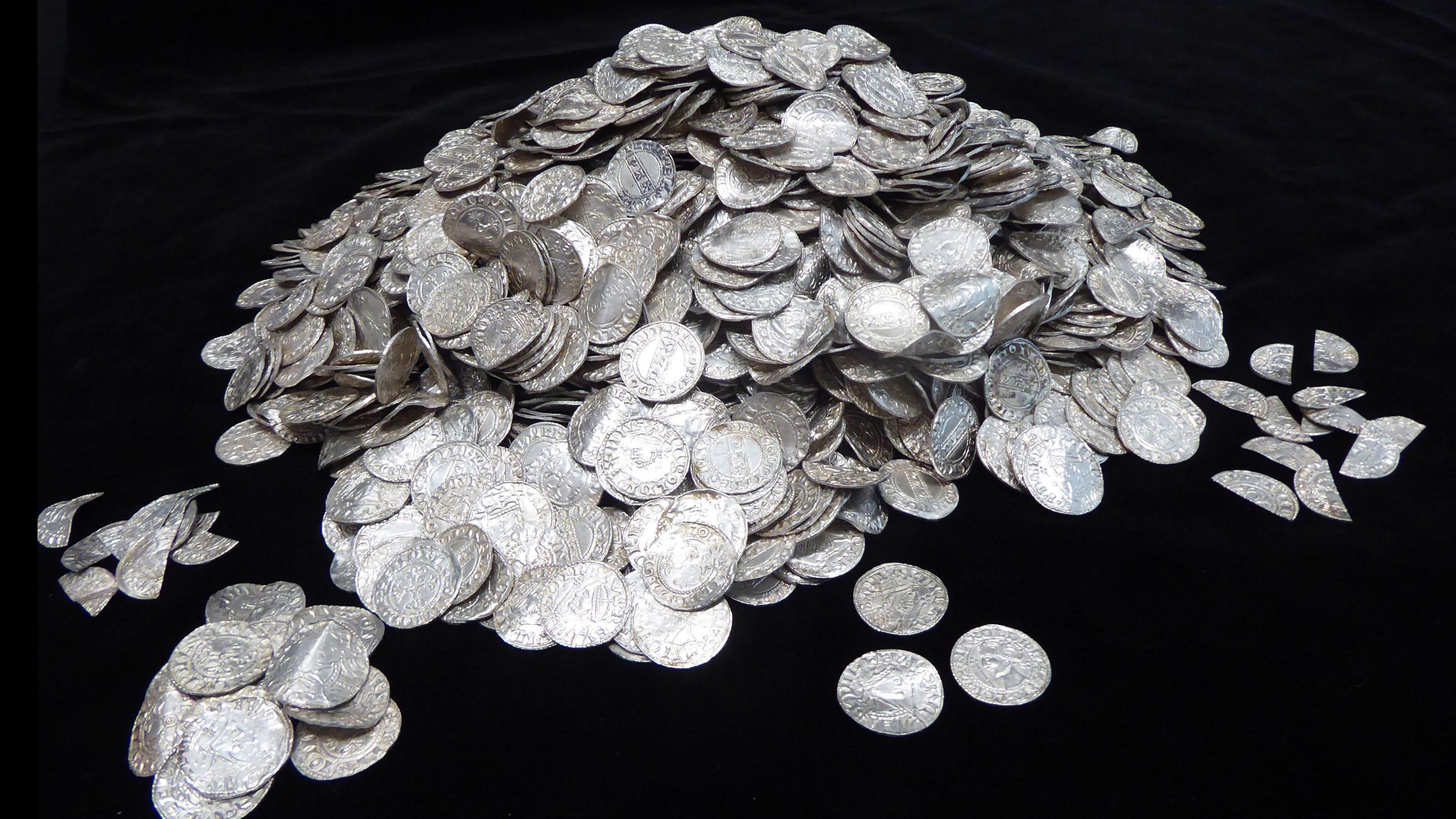UK's highest-value treasure discovery to go on display at museum

Pictured on just under half the coins is Harold II (1066), the last crowned Saxon king of England, and the other half feature William I, also known as William the Conqueror - the first Norman king of England (1066-1087).
- Published
A hoard of ancient silver coins discovered by a team of treasure hunters will soon go on display at a museum.
The coins were discovered in 2019 by a team of seven friends trying out their new metal detector in Chew Valley in the south-east of England.
In total 2,584 of the ancient silver pennies were discovered, with some dating as far back as 1066, to the Norman conquest.
Now, the friends have sold the collection of coins to the South West Heritage Trust, for a whopping Β£4.3 million - making it the highest-value treasure ever found in the UK.
The coins will go on display at the British Museum from 26 November.
- Published30 April
- Published10 May
- Published10 September 2023
South West Heritage Trust's curator of archaeology, Amal Khreisheh, holds one of the coins
Lisa Grace and Adam Staples who were part of the group who found the hoard said how it was "crazy" and a "dream" to find so many coins.
They also said they would split the money from the sale between the friends and the person who owned the land the coins were found on.
After going on display at the British Museum, the coins will later be displayed at museums across the UK, including in Bath, before finding a permanent home at the Museum of Somerset near to where the coins were discovered.
Speaking about the coins, Heritage Minister Sir Chris Bryant said: βThis remarkable hoard gives us unique insight into our country's rich history and one of the most important moments in our history, when these islands were thrown into turmoil by the Norman Conquest.β
What are the rules if you find treasure in the UK?
What do you do if you think you might have found some treasure?
In the UK, under the Treasure Act 1996, finders of potential treasure in England, Wales and Northern Ireland must tell their local coroner or Find Liason Officer (FLO) within two weeks of the discovery, by law, or they could be punished with a fine.
Formal research and tests will then be done by historical experts to see if the items really are treasure.
Under the Treasure Act, there are a few definitions of what treasure is, including prehistoric objects, coins that contain gold or silver and are at least 300 years old, or more recent valuable objects that have been deliberately hidden.
If the find is discovered to be treasure, then the finder must offer it for sale to a museum at a price set by the British Museum's Treasure Valuation Committee.
A reward is then offered to the treasure finders and other people involved in the discovery.
